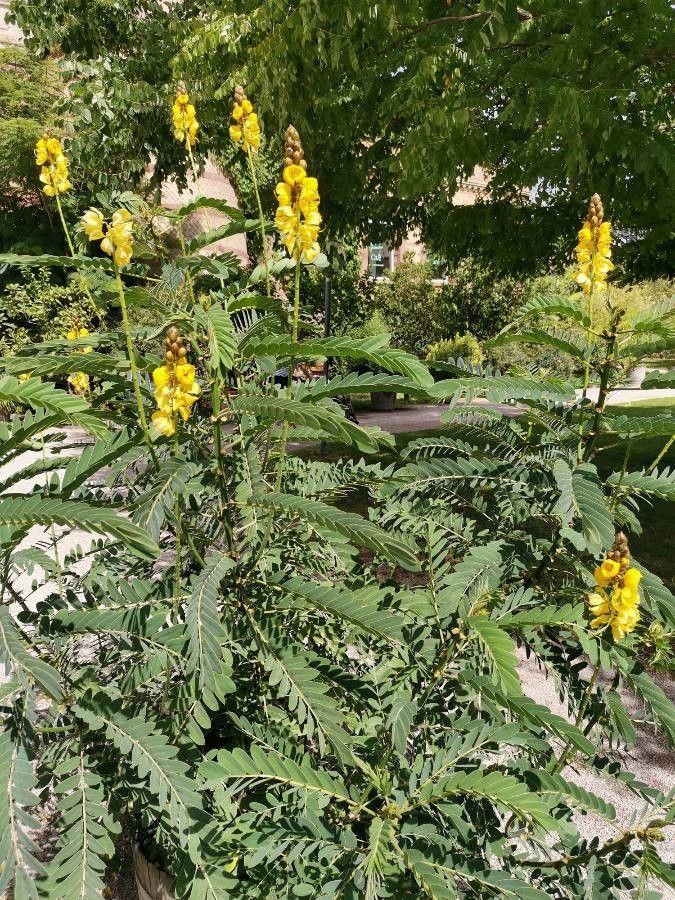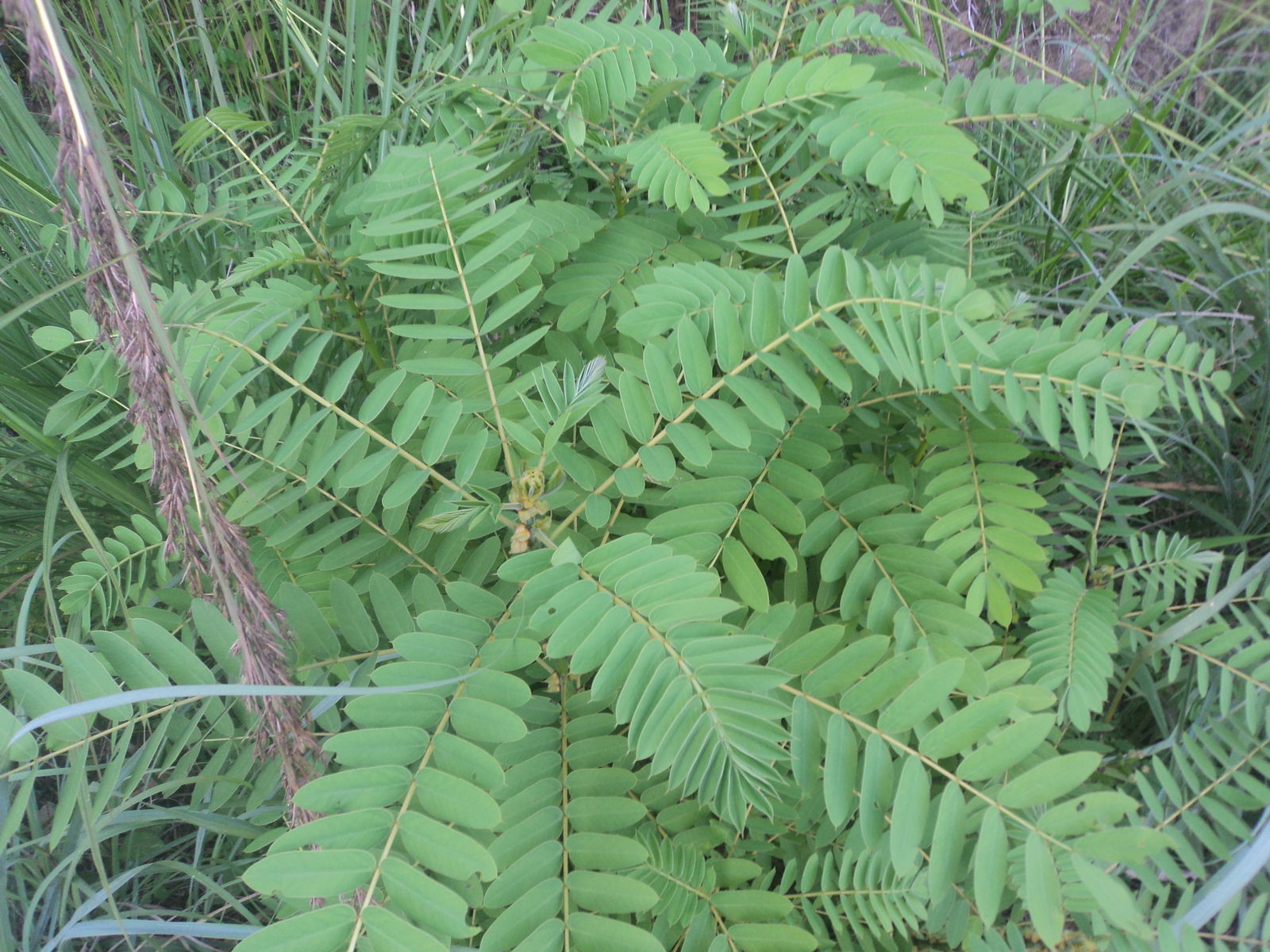Fume Tree
senna didymobotrya
Also known as: ["Cassia didymobotrya","Fume Bush"]
Overview
A deciduous shrub or small tree known for its pungent, fume-like fragrance emitted by its yellow flowers.
Benefits & Perks
["fragrant flowers","wildlife attractant (bees, butterflies, birds)","drought tolerant"]
Botanical Classification
| Phylum: | Magnoliophyta |
| Class: | Magnoliopsida |
| Order: | Fabales |
| Family: | Fabaceae |
| Genus: | Senna |
| Botanical Name: | Senna didymobotrya |
Plant Characteristics
Basic Information
- Category: Flowers
- Suitable Location: outdoor garden in warm climates
- Suitable For:
- Is Weed: No
- Allergenicity: high
Environmental Needs
- Climate: {"temperatureRange":"15–30°C"}
- Hardiness: {"zones":"9–11"}
- Misting: rarely required
- Drainage: Fast-draining to prevent waterlogging.
- Soil Type: Well-draining, loamy soil with organic matter.
Maintenance Level
- Maintenance Level: moderate
- Toughness Level: moderate
- Pruning Frequency: Annually in late winter or early spring; light pruning can be done as needed.
- Pruning Intensity: Moderate; remove up to one-third of growth if overgrown.
Care Details
Ideal Sunlight Coverage:
Full sun (6–8 hours/day); tolerates partial shade but blooms best in direct light.
Sunlight Tolerance Tips:
Acclimate gradually to intense sun; protect from harsh midday sun in hot climates; ensure adequate airflow to prevent fungal issues.
Care Requirements
Care Difficulty
moderatemoderate
Sunlight
full sun
Rotate plant for even light exposure; use shade cloth in extreme heat; avoid placing near reflective surfaces that intensify light.
Watering
every 7–10 days during active growth, reduce in winter
Water thoroughly but infrequently; ensure good drainage; avoid wetting foliage.
Soil
well-drained, loamy soil
pH: Slightly acidic to neutral (6.0–7.0).
Use raised beds in heavy soils; avoid compacted soil; topdress with compost annually.
Temperature
Warm conditions (65–85°F/18–29°C); sensitive to frost; thrives in tropical to subtropical climates.
Protect from frost; ensure good airflow in heat; adjust watering with temperature changes.
Fertilizing
every 4–6 weeks during growing season
Apply fertilizer after watering to prevent root burn; flush soil occasionally to prevent salt buildup; stop fertilizing in fall.
Propagation
Methods
Stem cuttings or seeds.
Step-by-Step Propagation Guide
- Take 4–6 inch cuttings.
- Remove lower leaves.
- Dip in hormone.
- Plant in medium.
- Keep moist and warm.
Best Time: Spring or early summer when plant is actively growing.
Environment
Warm (70–75°F/21–24°C), high humidity (70–80%), indirect light.
Medium
Well-draining mix of perlite and peat moss or cactus mix.
Hormone
Rooting hormone recommended for faster root development.
Timeline
Roots in 3–6 weeks; establish in 2–3 months.
Tools Needed
Pruners, rooting hormone, small pots, misting spray bottle.
Quick Tips
Use healthy, non-flowering stems; maintain humidity with a plastic bag; avoid direct sun during rooting.
Pruning & Repotting
Pruning Guide
Method
Cut just above a leaf node or bud; thin out crowded branches to improve airflow.
Pruning Plan
Shape plant, encourage bushiness, and remove dead/diseased growth.
Tools
Pruning shears, sterilizing solution, gloves.
Checklist
Sterilize tools; prune dead/diseased wood first; make clean cuts; dispose of clippings.
Repotting Guide
Best Season
Spring, before new growth begins.
Pot Size
One size larger pot (e.g., +2 inches in diameter).
Method
Remove plant gently; trim roots if needed; place in new pot with fresh soil; water lightly.
Suggestions
Repot every 2–3 years or when roots fill the pot; beneficial for growth and health.
Checklist
Check root bound status; prepare new pot with drainage; use fresh soil mix; water after repotting.
Advanced Care Tips
Watering Mastery
Watering Checklist
Check soil moisture; water deeply; ensure drainage; avoid wet leaves.
How to Apply Water Properly
Water at the base of the plant, ensuring moisture reaches the root zone; allow excess water to drain away; water early in the morning to minimize evaporation.
Watering Schedule Tips
Water deeply once the top inch of soil is dry; reduce frequency in winter to prevent root rot.
Soil Improvement
Add perlite or sand for drainage; incorporate compost for fertility; ensure pH balance with lime or sulfur if needed.
Temperature Stress Management
Signs of Temperature Issues
Chlorosis or leaf drop in cold; wilting or stunted growth in excessive heat.
Cold Stress
Growth slows or halts; leaves may yellow or drop; risk of frost damage below 50°F/10°C.
Solution: Move to a warmer location; provide frost protection in cold climates; avoid overwatering in cool conditions.
Hot Stress
Wilting, leaf scorch, or reduced flowering; soil may dry out too quickly.
Solution: Provide partial shade during peak heat; increase watering frequency; use mulch to retain soil moisture.
Fertilizing Guide
Fertilizing Checklist
Check season; dilute fertilizer; water before feeding; avoid contact with stems/leaves.
Fertilizing Method
Use balanced liquid fertilizer diluted to half strength every 4–6 weeks during growing season (spring/summer); avoid fertilizing in winter.
Common Problems & Solutions
Toxicity Warning
Cats
ToxicCats are particularly sensitive to the anthraquinone glycosides in Senna didymobotrya, which can cause severe gastrointestinal irritation and potential systemic toxicity. Cats may also exhibit more pronounced neurological symptoms compared to other species.
⚠️ Symptoms:
🌿 Toxic Parts:
⚡ Toxic If:
if eaten
Dogs
ToxicThe plant's anthraquinone glycosides can cause severe gastrointestinal upset in dogs, leading to dehydration and electrolyte disturbances. Chronic exposure may result in more serious systemic effects.
⚠️ Symptoms:
🌿 Toxic Parts:
⚡ Toxic If:
if eaten
Humans
ToxicSenna didymobotrya contains anthraquinone glycosides, which are potent laxatives and can cause severe gastrointestinal distress. Prolonged or excessive ingestion may lead to electrolyte imbalances and potential kidney or liver damage.
⚠️ Symptoms:
🌿 Toxic Parts:
⚡ Toxic If:
if eaten
Frequently Asked Questions
Q: Is Senna didymobotrya safe for pets?
A: No, it is toxic to dogs and cats.
Q: Why is it called the Fume Tree?
A: Due to its strong, pungent fragrance emitted by its flowers.
Q: Does it require much water?
A: It is drought tolerant and prefers moderate watering.
Quick Reference
| Family: | Fabaceae |
| Care: | moderate |
| Light: | full sun |
| Water: | every 7–10 days during activ |
Get Expert Care Tips
Download the Plantious app for personalized care reminders and plant identification!
Google Play App Store








